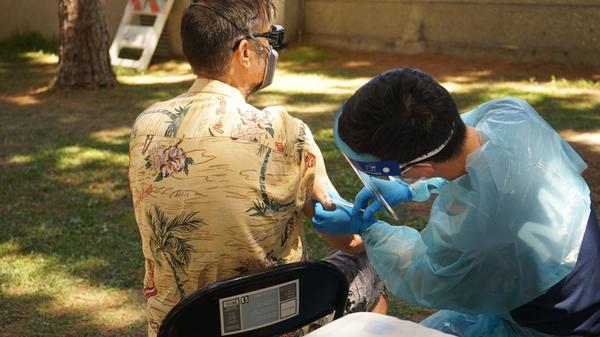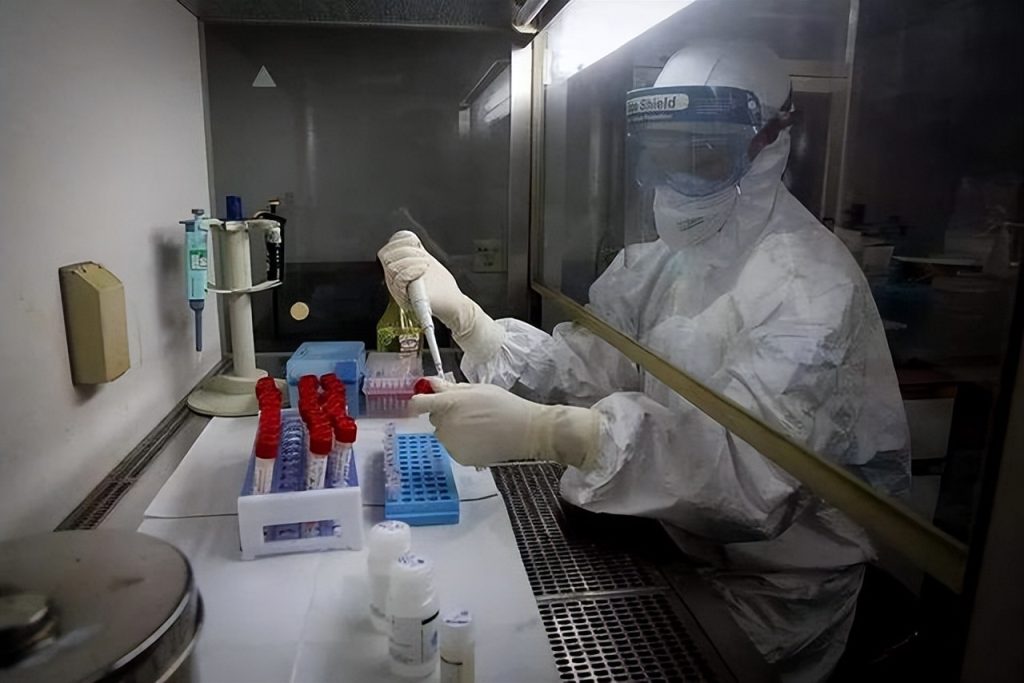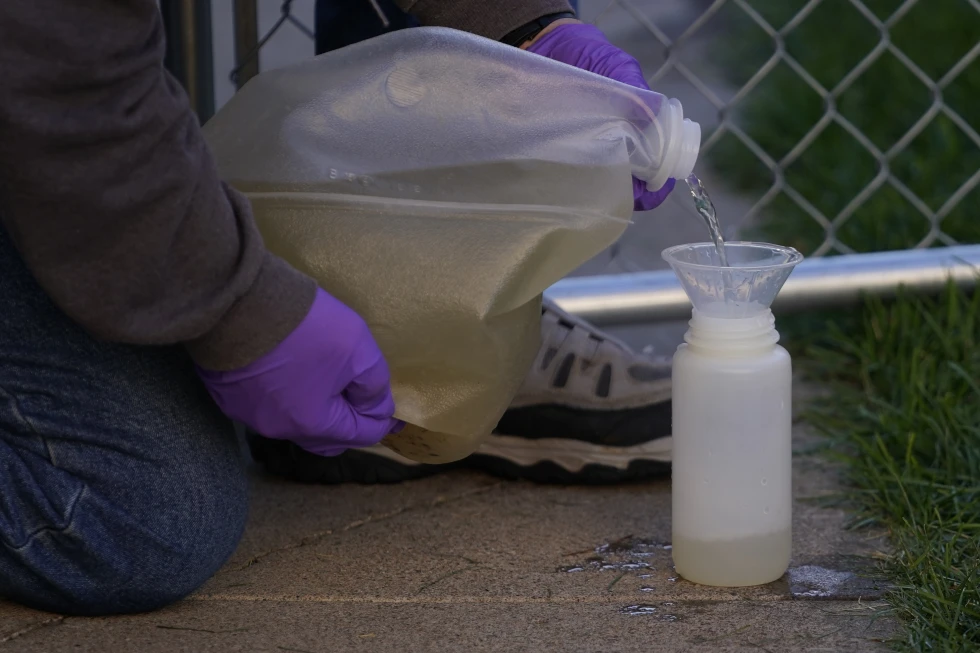The utilization of wastewater testing to detect infections, as highlighted in a recent report by U.S. health officials, marks a significant advancement in disease surveillance and prevention.
The findings affirm the efficacy of sewage-based monitoring in identifying the presence of mpox infections, thereby advocating for its broader application in tracking various diseases.
The research conducted by the U.S. Centers for Disease Control and Prevention (CDC) underscores the potential of wastewater testing as a valuable tool in public health initiatives.
The report reveals that during a week-long period, there was a notable 32% likelihood of detecting the presence of at least one individual infected with mpox in a population spanning from thousands to millions through the use of wastewater testing.
This statistical insight not only underscores the sensitivity of the testing method but also its potential to provide valuable insights into the prevalence of infections within communities.
Amy Kirby, who leads the CDC’s wastewater surveillance efforts, expressed initial uncertainty regarding the effectiveness of utilizing wastewater testing for detecting a rare infection such as mpox.
However, the results of the study have unequivocally demonstrated the method’s remarkable efficacy in this regard.
Kirby’s affirmation of the success of wastewater testing in detecting mpox infections underscores the significance of this development in the realm of public health.
The implications of this research extend beyond the specific case of mpox, signaling a broader shift in disease surveillance strategies.
The successful application of wastewater testing in detecting mpox infections serves as a compelling precedent for leveraging this method to monitor and track other diseases.
By harnessing the potential of sewage-based surveillance, public health authorities can gain valuable insights into the prevalence and spread of various infectious diseases within communities.
The implications of this research extend beyond the specific case of mpox, signaling a broader shift in disease surveillance strategies.
The successful application of wastewater testing in detecting mpox infections serves as a compelling precedent for leveraging this method to monitor and track other diseases.
By harnessing the potential of sewage-based surveillance, public health authorities can gain valuable insights into the prevalence and spread of various infectious diseases within communities.
Furthermore, the findings underscore the need to integrate wastewater testing into comprehensive public health strategies, particularly in the context of disease outbreaks and pandemics.
The ability to detect the presence of infections such as mpox in wastewater provides an early indicator of community-level transmission, enabling proactive measures to be implemented to mitigate the spread of the disease.
In conclusion, the recent report by U.S. health officials on the efficacy of wastewater testing in detecting mpox infections represents a significant milestone in disease surveillance and public health.
The demonstrated success of this method not only validates its utility in tracking specific infections but also paves the way for its broader application in monitoring various diseases.
As we continue to navigate the complex landscape of public health challenges, the integration of innovative surveillance methods such as wastewater testing holds immense promise in bolstering our capacity to safeguard communities against infectious diseases.
This development underscores the importance of ongoing research and investment in novel approaches to disease surveillance, with the potential to revolutionize our ability to proactively monitor and respond to public health threats.
As we embrace the transformative potential of wastewater testing and other cutting-edge surveillance technologies, we are poised to usher in a new era of disease monitoring and prevention, ultimately enhancing our collective resilience in the face of emerging health challenges.
Wastewater testing has emerged as a powerful tool in disease surveillance and early detection. As the number of infections within a community increases, the likelihood of detecting pathogens in wastewater also rises.

This essay explores the significance of wastewater testing in disease monitoring, its potential impact on public health, and the challenges associated with its implementation.
The water that flows through our daily activities, carrying remnants of viruses and bacteria from bodily excretions, has become a focal point for disease surveillance.
Research has demonstrated that wastewater testing can serve as an early warning system, detecting the presence of pathogens in a community even before clinical cases are reported.
Joshua Levy, a researcher at the Scripps Research Institute, has highlighted the comprehensive nature of wastewater testing, stating that almost every type of virus targeted has been detectable through this method.
Despite its potential, the implementation of wastewater testing as a widespread surveillance tool is still in its nascent stages.
In the United States, a significant portion of counties are actively reporting wastewater data to the Centers for Disease Control and Prevention (CDC).
However, this coverage primarily encompasses larger counties, leaving out rural areas that lack connection to municipal sewage systems.
Nonetheless, the significance of wastewater testing became particularly pronounced during the COVID-19 pandemic, as it offered a complementary approach to traditional clinical testing, especially in areas with limited access to healthcare facilities.
Beyond its initial use in COVID-19 surveillance, wastewater testing has expanded to encompass the monitoring of other infectious diseases.
In 2022, the CDC initiated a collaboration with select cities to detect polio in wastewater, marking a crucial step in broadening the scope of this surveillance method.
The emergence of mpox, also known as monkeypox, prompted a new effort to detect its genetic material in wastewater, a development that underscored the versatility of this approach in tracking various pathogens.
A recent study conducted by the CDC examined wastewater samples from multiple sites across the United States, demonstrating the successful detection of mpox DNA.
This approach not only proved effective but also exhibited greater sensitivity in detecting mpox compared to COVID-19.
While acknowledging the challenges of directly comparing different diseases, CDC officials emphasized the potential of wastewater testing as a sensitive and reliable tool for disease surveillance.
Despite its promise, wastewater testing faces several challenges, including the need for broader implementation across diverse communities and the development of standardized protocols for data collection and analysis.
Additionally, the interpretation of wastewater data in conjunction with clinical reports requires careful consideration due to variations in disease characteristics and reporting practices.
However, the potential of wastewater testing in revolutionizing disease surveillance and early detection cannot be understated, and ongoing efforts to refine and expand its application hold promise for enhancing public health preparedness.
Wastewater testing has emerged as a vital component of disease surveillance, offering early detection capabilities and the potential to complement traditional clinical testing.
Its successful application in detecting various pathogens, including COVID-19 and mpox, underscores its versatility and efficacy.
As efforts continue to expand its reach and refine its methodologies, wastewater testing stands poised to play an increasingly significant role in safeguarding public health and bolstering disease monitoring efforts globally.
The Centers for Disease Control and Prevention (CDC) has recently expanded its data collection efforts to include information on flu and respiratory syncytial virus (RSV) in about 40 states.
While this data is not yet publicly available, the agency is working on determining the best methods for displaying it, with plans to make it accessible to the public by the next fall.
Additionally, the CDC intends to commence tracking antibiotic-resistant germs and monitoring certain foodborne pathogens by early next year.
One notable development highlighted by CDC official Kirby is the success of wastewater surveillance in surpassing expectations.
This innovative approach has generated excitement within the agency, prompting discussions about potential applications in understanding disease dynamics within communities.
The decision to broaden the scope of data collection reflects the CDC’s commitment to enhancing public health surveillance and response capabilities.
By incorporating information on additional viruses, antibiotic resistance, and foodborne pathogens, the agency aims to provide a more comprehensive understanding of disease trends and potential public health threats.
The inclusion of wastewater surveillance is particularly noteworthy, as it represents a novel and effective means of monitoring disease prevalence within communities.
This approach has the potential to yield valuable insights into the spread of infectious agents and inform targeted public health interventions.

As the CDC continues to expand its data collection and surveillance efforts, it underscores the importance of leveraging innovative tools and technologies to stay ahead of emerging health challenges.
By harnessing the power of data and surveillance, the agency is better positioned to detect, respond to, and ultimately mitigate the impact of infectious diseases on a broader scale.
In conclusion, the CDC’s initiative to broaden its data collection efforts to encompass flu, RSV, antibiotic-resistant germs, and foodborne pathogens, coupled with the promising results of wastewater surveillance, signifies a significant step forward in public health surveillance.
These efforts demonstrate the agency’s dedication to leveraging advanced tools and methodologies to enhance its understanding of disease dynamics and strengthen its ability to protect public health.
